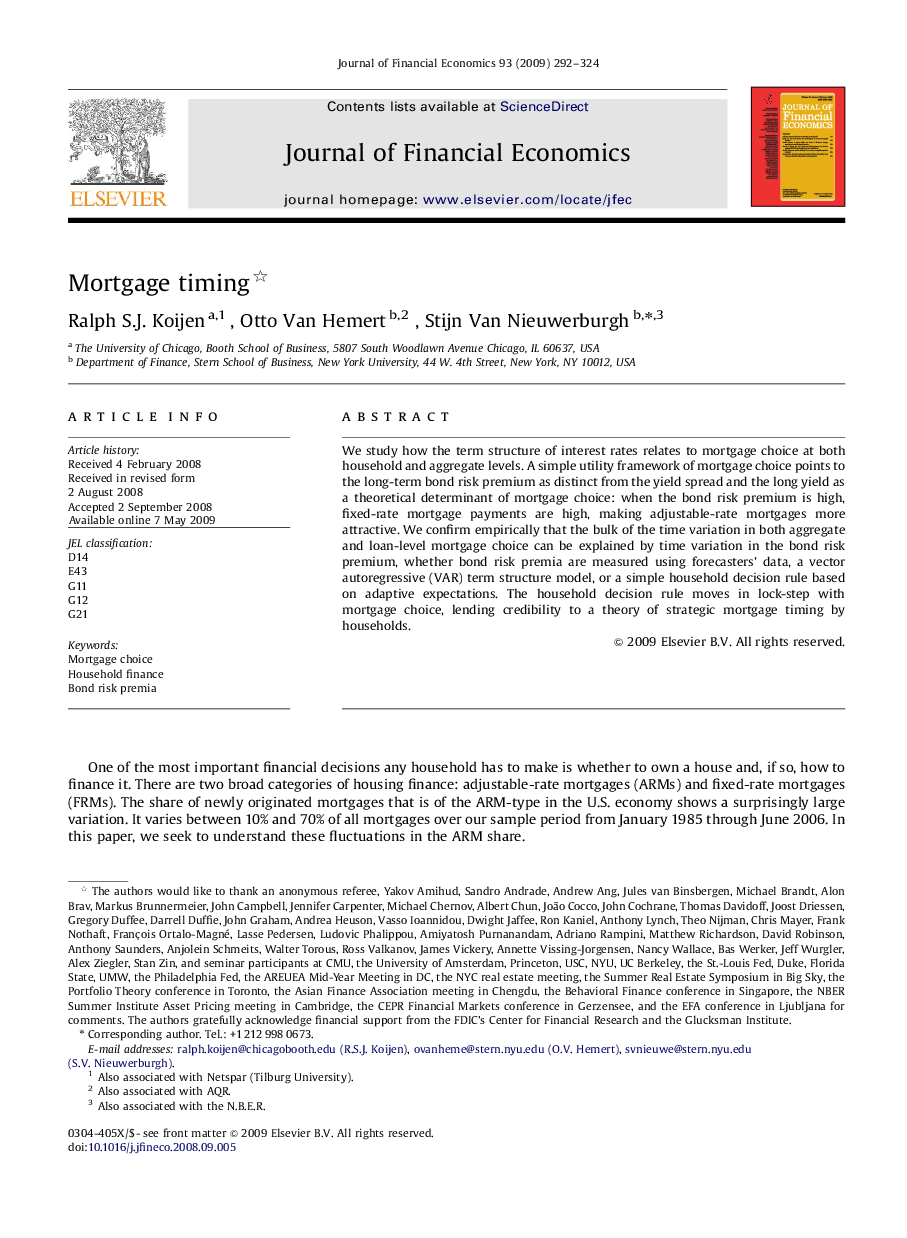| Article ID | Journal | Published Year | Pages | File Type |
|---|---|---|---|---|
| 960415 | Journal of Financial Economics | 2009 | 33 Pages |
We study how the term structure of interest rates relates to mortgage choice at both household and aggregate levels. A simple utility framework of mortgage choice points to the long-term bond risk premium as distinct from the yield spread and the long yield as a theoretical determinant of mortgage choice: when the bond risk premium is high, fixed-rate mortgage payments are high, making adjustable-rate mortgages more attractive. We confirm empirically that the bulk of the time variation in both aggregate and loan-level mortgage choice can be explained by time variation in the bond risk premium, whether bond risk premia are measured using forecasters’ data, a vector autoregressive (VAR) term structure model, or a simple household decision rule based on adaptive expectations. The household decision rule moves in lock-step with mortgage choice, lending credibility to a theory of strategic mortgage timing by households.
